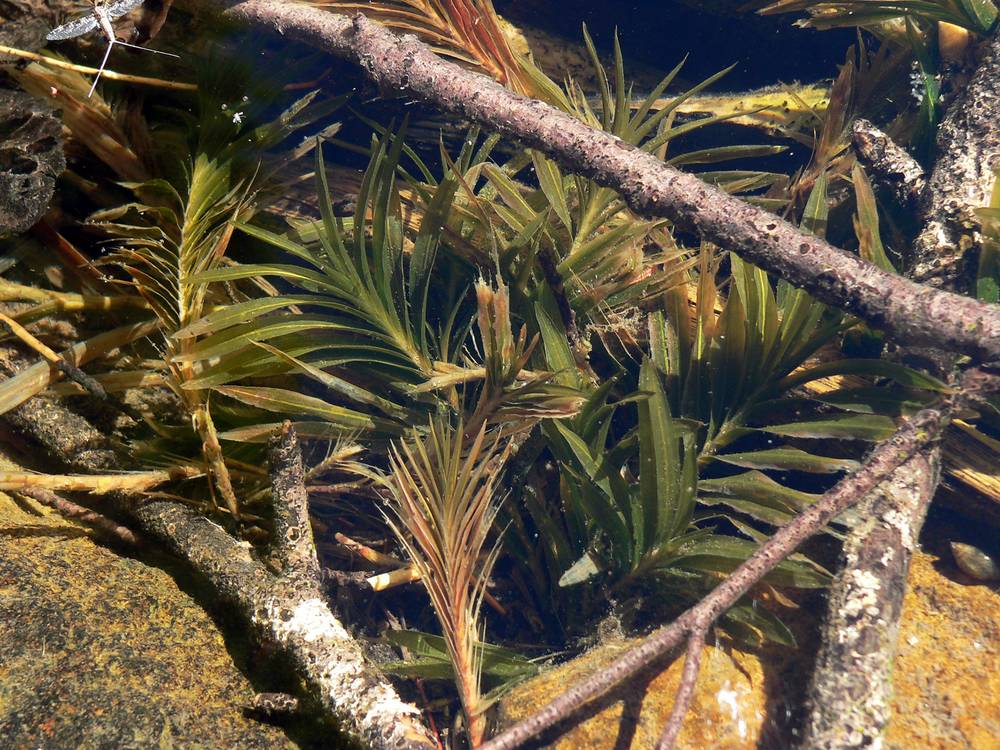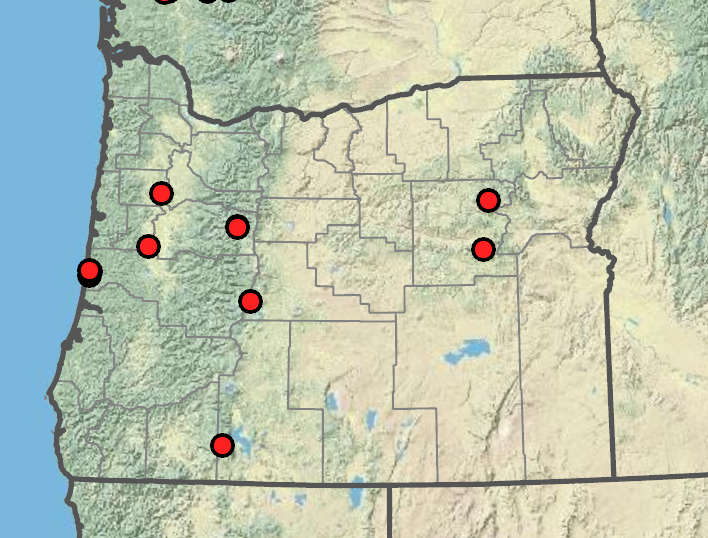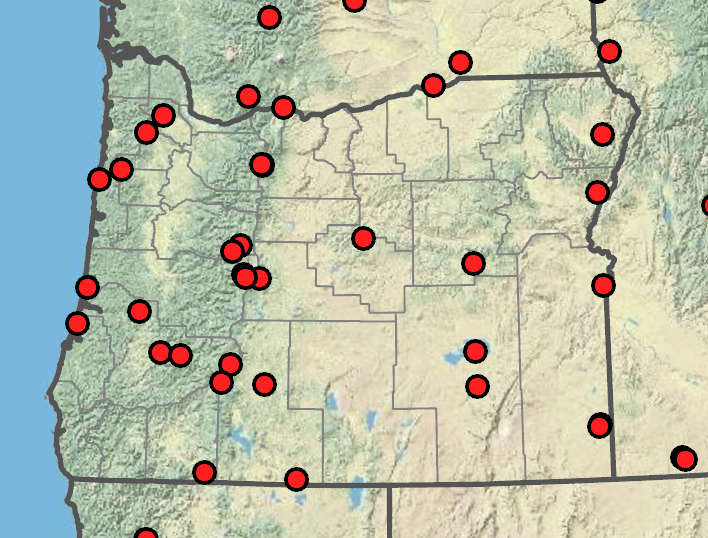Potamogeton robbinsii
Potamogeton berchtoldii
Robbins' pondweed
Berchtold's pondweed
terete; to 100 cm; nodal glands absent.
terete to slightly compressed, 18– 150 cm; nodal glands present on at least some nodes; to 0.5 mm diameter, green; gold, brown, or rarely white.
submersed, conspicuously 2-ranked, sessile; more or less sti?;
blades attached to lower 25% of petiole;
stipules ligulate, 0.5– 2 cm, fibrous, shredding at tip;
tip obtuse;
blades linear to lanceolate, 20–70(120) × 3–4(8) mm;
base rounded, with basal lobes (auricles);
margins minutely spinulose to serrulate;
tip acute; lacunae absent;
veins 20–60.
submersed, attached to stem nodes, not attached to stipules;
stipules convolute, 3.1–9.2 mm, rarely fibrous;
tip acute to obtuse;
blades linear, 9–54 × 0.2–2.5 mm;
base slightly tapering;
margins entire;
tip subulate to obtuse; lacunae in 1–5 rows on each side of midrib;
veins 1–3(5).
often branched;
peduncles axillary; erect, 30–50(70)mm;
spikes moniliform, 7–20 mm.
submersed or emersed;
spikes capitate to cylindric, continuous to interrupted, 1.5–10.1 mm;
peduncles more than 3 per plant; axillary or terminal, cylindric to slightly clavate; erect, rarely recurved, 5–66 mm.
stipitate, obliquely obovoid; turgid, 3–4(5) × 2(3.3)mm, brown, dorsally and laterally keeled;
beaks erect, recurved at tip, 0.7–0.9 mm.
sessile; ovoid;
sides rounded, rarely concave, 1.5–2.2 × 1.2–1.6 mm, green to brown, not keeled;
beaks erect, located at middle of fruit tip, 0.1–0.6 mm.
Potamogeton robbinsii
Potamogeton berchtoldii
Shallow to deep water of ponds, lakes and slow-flowing rivers. 50–2400 m. BW, Casc, WV. CA, ID, WA; north to AK, northeast to Nunavut, east to Prince Edward Island. Native.
Potamogeton robbinsii is our only species with branched inflorescences and auriculate leaf blades. It flowers only rarely.
Shallow waters of lakes and streams. 0–1700 m. BR, BW, Casc, ECas, Est. CA, ID, NV, WA; north to Northwest Territories, east to Newfoundland, southeast to FL; Eurasia. Native.
This pondweed is sometimes treated as a subspecies of P. pusillus (P. p. ssp. tenuissimus). Immature plants usually cannot be distinguished from P. foliosus or P. pusillus.
Nick Otting, Richard Brainerd, Barbara Wilson
Nick Otting, Richard Brainerd, Barbara Wilson
- Local floras:
BC,
CA,
OR,
WA
- Local Web sites:
CalFlora,
CalPhotos,
Flora NW,
PNW Herbaria
WildflowerSearch
iNaturalist (observations)
USDA Plants Database
- LBJ Wildflower Center
- SEINet
- Plants of the World Online
- Encyclopedia of Life
- Wikipedia
- Google Image Search
- Local floras:
BC,
CA,
OR,
WA
- Local Web sites:
CalFlora,
CalPhotos,
Flora NW,
PNW Herbaria
WildflowerSearch
iNaturalist (observations)
USDA Plants Database
- LBJ Wildflower Center
- SEINet
- Plants of the World Online
- Encyclopedia of Life
- Wikipedia
- Google Image Search




